1. December 2022 | Series "The Effects of the Ukraine War on the German Labour Market"
Vocational training in Ukraine – an overview
Franziska Schreyer , Silke Anger , Tim-Felix Grabert , Olena Martyniuk

Russia’s war of aggression against Ukraine has forced many people to flee. The UN Refugee Agency UNHCR assumed in October that there are currently more than six million displaced persons living in Ukraine. The UNHCR estimates the number of refugees living in European (neighbouring) countries at just under eight million. In Germany, approximately one million people from Ukraine were newly registered in the German Central Register of Foreigners (Ausländerzentralregister, AZR) between the end of February 2022, i.e., shortly after the beginning of the war, and early October 2022. This is according to information from the German Federal Ministry of the Interior and Community (deutsches Bundesministerium des Innern und für Heimat, BMI). Two out of three Ukrainian refugees in Germany are female. A good third of those registered in Germany are children and adolescents. Due to the fact that Ukrainian refugees enjoy visa exemption upon entering Germany, and some have since travelled on to other receiving countries, or back to Ukraine, these figures are rather inaccurate.
Studies show: The people who flee from war and crisis regions to (Western) Europe are usually better qualified than those who remain in the war and crisis regions (for more detailed analyses, please refer to the study by Lucas Guichard from 2020 and the study by Cevat Giray Aksoy and Panu Poutvaara from 2021). The situation seems to be similar for refugees from Ukraine, as Judith Kohlenberger et al. demonstrate on the basis of their survey in the receiving countries of Poland and Austria. A survey (only available in German) conducted on behalf of the German BMI at the end of March 2022 indicates that many of the refugees who had fled Ukraine to Germany by that time had tertiary education. Representative data on the school and vocational training of all adults who have immigrated since the beginning of the war is not yet available in many receiving countries, including Germany. However, a look at the education system and vocational training in Ukraine can provide crucial indications and background information (see also Chapter 3 IAB Research Report 4/2022 by Herbert Brücker – only available in German).
The education system in Ukraine
As in Germany, primary school in Ukraine lasts four years (see Figure 1). However, there is no early division of schoolchildren into different types of schools after fourth grade in Ukraine. Instead, after primary school, pupils attend a common basic (lower) secondary school for five years. After successful final examinations in ninth grade, pupils graduate from this basic secondary school. This gives them access to senior secondary school (grammar school) or, alternatively, vocational training. Senior secondary school ends with the certificate of the grammar school, the Ukrainian equivalent of the general university entrance qualification.
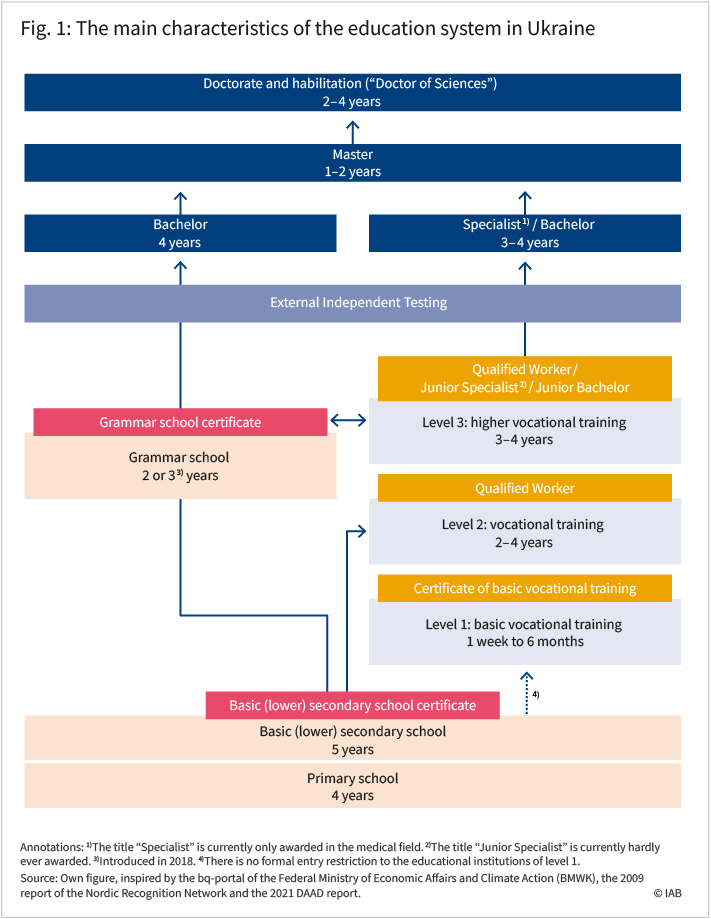
Approaches of a dual system of vocational education and training in schools and establishments were introduced in 2015
The vocational education and training system in Ukraine consists of an extensive network of vocational education and training schools. It is divided into three levels characterised by a high degree of permeability (for more details, please refer to the bq-portal of the Federal Ministry of Economic Affairs and Climate Action (Bundesministerium für Wirtschaft und Klimaschutz – only available in German)). The first level provides basic vocational training, especially for (helper) jobs in the industry and service sector. Knowledge is imparted in courses at vocational schools and in education and production centres. They last between one week and six months. Access is not restricted. Basic vocational training is completed with a certificate.
Beyond that, the second level imparts vocational training – such as in-depth technical knowledge and the competence to perform more complex operational activities. This is the level of training of, for instance, office clerks (accounting), information processing and software operators, chefs or flight attendants. (Technical) vocational schools, as well as education and production centres, are responsible for training in this regard. The training duration depends on the entry qualification and usually lasts two to four years. Generally, you need to complete basic secondary school for access. The second level is completed with a certificate as a “Qualified Worker”.
Since 2015, Ukraine has been additionally offering vocational education and training at the second level in the form of dual vocational training, i.e., training taking place both in establishments and schools. Dual training thus provides for a higher practical component than is the case with school-based training, as Dirk Werner and his team of authors explain in a study from 2022. However, the dual vocational training system is still in the process of expansion and seems to be in little demand so far. In 2019, less than four percent of trainees participated in dual vocational training, as the Federal Ministry of Economic Affairs and Climate Action reports in its bq-portal. Unlike in Germany and other European countries, dual vocational training has been quite irrelevant in Ukraine so far.
People often obtain vocational qualifications in vocational schools, colleges, and universities
The third level is about higher vocational education, which is acquired in three to four years at specialised colleges and vocational schools. This includes, for example, specific (technical and medical) expertise. These institutions also teach skills allowing graduates to cope with demanding tasks and to deal with complex technologies.
Occupations that can be learned (exclusively) at this third level are, for example, agricultural occupations, care and education occupations and IT occupations (such as programmer or cyber security expert). Generally, the entry requirement is the completion of grammar school. Depending on the occupational group, you can complete the third level as a “Qualified Worker” or as a “Junior Specialist”. In their study from 2022, Dirk Werner et al. point out that the first-mentioned qualification tends to refer to occupations with a medium level of requirements. The latter qualification, on the other hand, refers to more technologically demanding occupations that require a broader range of specialist knowledge; in terms of content, this vocational training is thus quite close to academic education. In the meantime, the title of “Junior Specialist” has been replaced by “Junior Bachelor”. This also allows taking up a degree course at university.
Statistically speaking, the degrees at the third vocational education level are classified as tertiary education – which partly explains the high proportions of tertiary degrees among refugees from Ukraine (for example, in the survey by the German BMI from March 2022 cited above).
Frequently, professions can be learned at several levels of vocational education and training with different qualification levels. For professions in hairdressing, for example, the competences for activities of a more helping nature can be acquired at the first level, for more demanding technical activities at the second level. Training for the occupation “hairdresser – stylist”, for example, at the third level provides additional skills, among others, in business administration, labour law and IT and entitles the trainee to enter higher education after successful completion.
Also training to become a car mechanic, for example, is offered at different qualification levels (detailed information on individual training courses and occupations can be found on the pages of the bq-portal of the Federal Ministry of Economic Affairs and Climate Action – only available in German). Training institutions often offer training at different levels.
The usual vocational training in Ukraine is supplemented by partly extensive practical periods. For instance, in the case of nursing or medical technology training, two months of school may be followed by a practical period of two months in a hospital or laboratory. Usually, training in school dominates at the beginning, while practical phases increase over the course of training. However, establishments in Ukraine have so far been structurally much less involved in training than in Germany and other European countries.
Higher education in Ukraine
In 2005, Ukraine joined the so-called Bologna Process. Since then, as in other European countries, higher education has been divided into Bachelor’s and Master’s degree programmes (exception: medicine). A special characteristic for accessing Bachelor’s programmes is “External Independent Testing” (EIT). Since 2008, it has replaced local examinations at universities as a nationwide admission test. This also intends to combat corruption in Ukrainian universities (for corruption and plagiarism in the Ukrainian education system, please see a report published by the German Academic Exchange Service in 2021 and a report published by the Organisation for Economic Cooperation and Development/OECD in 2017). A similar tool to fight corruption exists in the transition to Master’s programmes only in law.
In late 2019, Ukraine also introduced dual degree programmes. According to the German Academic Exchange Service (Deutscher Akademischer Austauschdienst, DAAD), however, it is still unclear how much demand there is for these and how much they are supported by establishments.
Some of the degrees in professions that are trained in dual or school-based training and further vocational training in Germany can also be obtained at universities in Ukraine. This applies, for example, to the profession of printing technician, to commercial professions in tourism or to the profession of accountant. This also explains the high proportion of tertiary degrees in Ukraine. These educational programmes are currently completed with the title of “Bachelor”. The title of “Specialist” was also awarded in the past, but this is currently reserved for degrees in medical subjects.
At just over four percent, slightly more Ukrainian students studied abroad than German students in 2018. Poland is the most popular place of study, followed by Germany, the Czech Republic, Italy and Slovakia. In Germany, eleven percent of students were foreign nationals in 2019; in Ukraine, this was approximately three percent. These students are mostly enrolled in medical faculties in Ukraine. Their main countries of origin are India, Azerbaijan, Turkmenistan, Morocco and Nigeria.
Similar to other European states, Germany treats these war refugees differently from refugees with Ukrainian citizenship. Students with non-Ukrainian citizenship only receive a residence permit intended for the latter if they cannot return to their countries of origin safely and permanently (for more information on this, please refer to the BMI website).
Further training in Ukraine
As Larysa Lukianova and Maiia Dernova point out in a report from 2021, further education and training of adults has long been neglected in Ukraine. Since 2017, however, Ukraine has been giving higher priority to adult education. However, the authors state that government support is still inadequate, and both companies and employees have little incentive to support or participate in further training.
The Adult Education Survey, which regularly measures participation in further training in European countries, has not yet been conducted in Ukraine. To our knowledge, there is, therefore, no reliable current data on further training in Ukraine.
Educational attainment of the Ukrainian population
According to official data, the population in Ukraine is formally well educated. This is probably also due to the fact that, according to UNESCO, at 5.4 percent of the gross domestic product in 2019, educational expenses are high by international standards. At the same time, the World Bank, for example, reports on poorly equipped educational institutions and a lack of qualified teaching staff at schools and universities, which is also related to their bad pay.
According to UNESCO, illiteracy is almost non-existent in Ukraine. According to the European Training Foundation, only two percent of the labour force (total of the working population and unemployed people) had at most primary education in 2017. 45 percent had secondary education. 53 percent had completed or were still in tertiary education. As already described, the high proportion of tertiary education in Ukraine must be considered from the perspective that, in Ukraine, occupations are assigned to this sector that, in Germany or other European countries, are trained within the framework of dual or school-based vocational training.
International datasets, such as those collected in the Program for International Student Assessment (PISA), allow an analysis not only of formal qualifications but also of the extent to which corresponding skills actually exist in various areas. For example, the 2018 PISA data for Ukraine show that the 15-year-old students tested there achieved better results in all subjects (mathematics, reading, sciences) than in some other Eastern European countries such as Romania, Moldova or Georgia.
Nevertheless, Ukraine lags behind the OECD average and also behind Germany. The fact that Ukraine participated in the PISA study for the first and only time in 2018 (the second participation was planned for 2022) makes a comparison over time impossible. Ukraine has not yet participated in the PIAAC study (Programme for the International Assessment of Adult Competencies) for the cross-national assessment of adult competencies.
German language skills are also important for orientation in the receiving country Germany; English language skills can also be very helpful here, as in other receiving countries. In the survey conducted at the end of March this year on behalf of the BMI among people who had fled from Ukraine to Germany up to that point, just under one in ten of those interviewed stated that they had at least “sufficient” knowledge of German.
According to the Goethe-Institut, German is the second most important West European foreign language in the Ukraine after English. According to legal requirements, foreign language skills should already be taught in primary and basic secondary schools, even if, according to the DAAD, this requirement is not implemented across the board due to a lack of teachers. Although Ukrainian is not written in the Latin alphabet, people with skills in the aforementioned foreign languages know it, which is also an important prerequisite for finding one’s way in Germany and other European countries.
Educational attainment and labour force participation of women in Ukraine
According to the Federal Ministry of the Interior and Community (only availalbe in German), three out of four adult refugees to Germany are women. Therefore, in the following, we will take a closer look at the qualifications and labour force participation of women in Ukraine. On average, their level of education is higher than that of men. For example, the International Labour Organisation (ILO) reports that the share of women with tertiary education is 63 percent for the year 2021. For men, this proportion is 48 percent. In their IAB Research Report (4/2022 – only available in German), Herbert Brücker et al. identify similar gradients between women and men in other Central and Eastern European countries such as Poland, Russia and Romania.
Despite their higher level of education on average, the labour force participation of women in Ukraine is lower than that of men. According to the ILO, the official labour force participation rate of women was 48 percent in 2021, while that of men was 63 percent. In this context, the European Training Foundation references the multiple stresses of family and work on working women. Almost three out of four working women in Ukraine worked in the service sector in 2017, 14 percent in industry and 13 percent in agriculture. For working men, the figures are 48 percent (service sector), 34 percent (industry) and 18 percent (agriculture). As Mario Bossler and Martin Popp point out in their article in IAB-Forum from 2022, working women in Ukraine worked mainly in service professions and as sales staff, in academic professions and as unskilled workers (see Figure 2). Based on respondent data, the ILO reports a female unemployment rate of 9.8 percent for 2020 (men – 9.1 %).
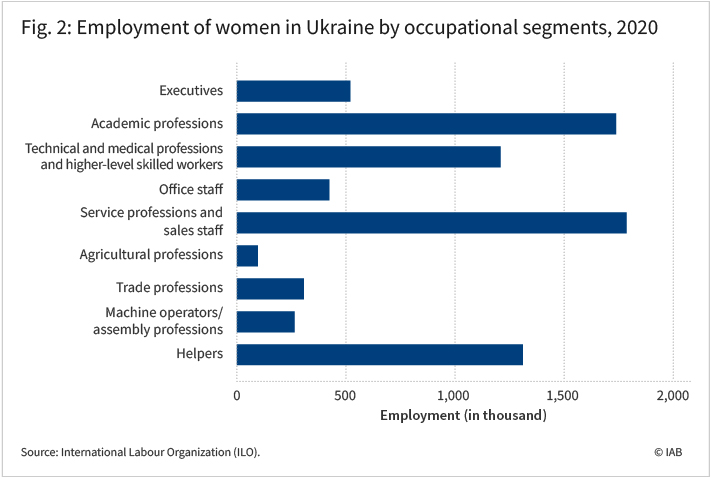
Conclusion
The available indicators suggest that the formal educational attainment of the Ukrainian population is quite high. On average, women are better educated than men. However, comparability with educational attainments in Germany and other European countries is limited in particular due to the fact that many practical vocational qualifications are not acquired in a dual system or at the intermediate vocational level in Ukraine but in (higher) school institutions.
Despite the introduction of dual training in Ukraine in 2015, many refugees are probably hardly aware of the dual training system. In this respect, it is important to inform young people and their parents about the vocational training system in Germany and other European countries – not least with regard to the associated opportunities for advancement and further qualification.
The people of working age who have fled from Ukraine to Germany have so far been predominantly women, often with children. Despite their higher education on average, women in Ukraine are also less likely to participate in the labour force than men. If they stay in Germany or other receiving countries for a longer period of time, they can only be successfully integrated into the labour market if childcare facilities are available. This is also what the IAB Research Report 02/2022 by Herbert Brücker et al. (only available in German) emphasises.
Representative data on the motivation of women who have fled to Germany and other European countries to stay and work is not yet available. A new survey among female and male refugees from Ukraine in Germany, initiated by the Institute for Employment Research, the Federal Institute for Population Research, the Federal Office for Migration and Refugees, and the Socio-Economic Panel Study will fill this gap.
In view of the high level of educational attainment of women in Ukraine, it can be assumed that they have an affinity for education and a strong interest in integration and language courses. In order to be able to participate in these courses, an adequate level of high-quality and flexible childcare facilities is crucial.
Info box: Ukraine: key data on socio-demographics and the labour market
In January 2021, Ukraine had just under 42 million inhabitants, 46 percent male and 54 percent female. Due to emigration, age structure and low birth rate, the population has been declining since the 1990s. It comprises more than 130 nationalities and ethnic groups (visit these pages of the Ukrainian State Statistics Committee). The official language is Ukrainian. In addition to the widely spoken Russian, languages such as Polish, Romanian, Hungarian or Moldavian are also spoken or understood in some regions.
The ILO reports an overall labour force participation rate of 55 percent for Ukraine in 2020, although informal employment is common, according to the European Training Foundation. According to survey data, the unemployment rate was 9.5 percent in 2020. For young people, it was twice as high at 19.3 percent. The State Employment Service supports establishments and job seekers.
For more data and information, please refer to the Statistical Yearbook of Ukraine 2020, the websites of the Centre for Research and Analysis of Migration (CReAM) and of the IQ Fachstelle Einwanderung (only available in German) or an IAB Research Report (4/2022) by Herbert Brücker et al. (only available in German).
Literature
Bossler, Mario; Popp, Martin (2022): Viele geflüchtete Ukrainerinnen könnten mittelfristig in Engpassberufen unterkommen. In: IAB-Forum, 23 March 2022.
Brücker, Herbert (2022): Geflüchtete aus der Ukraine: Eine Einschätzung der Integrationschancen. IAB-Forschungsbericht no. 4.
Keitel, Christiane; Winters, Jutta; Kosyakova, Yuliya; Brücker, Herbert (other contributors) (2022): “We see good integration prospects for Ukrainian refugees” (Interview with Herbert Brücker and Yuliya Kosyakova). In: IAB-Forum, 24 June 2022.
Kogan, Irena; Gebel, Michael; Noelke, Clemens (2012): Educational Systems and Inequalities in Educational Attainment in Central and Eastern European Countries. In: Studies of transition states and societies, volume 4, issue 1, p. 69–83.
Kohlenberger, Judith; Buber-Ennser, Isabella; Pędziwiatr, Konrad; Rengs, Bernhard; Riederer, Bernhard; Setz, Ingrid; Brzozowski, Jan; Nahorniuk, Olena (2022): What the self-selection of Ukrainian refugees means for support in host-countries. In: Blog of The London School of Economics and Political Science, 7 September 2022.
Lukianova, Larysa; Dernova, Maiia (2021): Historical Periods and Current State of Adult Education in Ukraine. In: UNESCO Chair Journal “Lifelong Professional Education in the XXI Century”, issue 3, p. 13–22.
Nordic Recognition Network (2009): The Educational System of Ukraine.
State Statistics Service of Ukraine (2021): Statistical Yearbook of Ukraine 2020, Kyiv.
Zimmermann, Gisela; Schwajka, Oksana (2021): DAAD-Bildungssystemanalyse Ukraine. Daten & Analysen zum Hochschul- und Wissenschaftsstandort. Bonn.
We would like to thank the German Academic Exchange Service (Deutscher Akademischer Austauschdienst, DAAD) for their advice and valuable tips, as well as Tobias Hörl for his support with this report.
In brief
- In October 2022, almost eight million war refugees from Ukraine were living in other European countries. Approximately one million refugees have been registered in Germany, most of them women. Representative data on the qualifications of the refugees is not yet available, but information on the education system and the qualification structure in Ukraine is.
- In Ukraine, many vocational qualifications are acquired at (high) school institutions. From 2015 onwards, dual training and dual degree courses at universities were also introduced there. However, there has been little demand for these so far.
- The available indicators point to a formally well-educated Ukrainian population. However, in terms of the high proportion of tertiary degrees, we must take into account the structure of the Ukrainian education system – many professions that are trained at the intermediate vocational level in other European countries are learned in (high) school education in Ukraine and are considered tertiary degrees.
- PISA data from 2018 show that the actual competences of students in Ukraine are below the OECD average. Ukraine has not yet participated in the PIAAC study of adult competencies across countries.
- On average, women in Ukraine are better educated than men. Nevertheless, they participate less in the labour force than men do.
- In order for refugee women to participate in integration measures, such as learning the language of the receiving country, as well as in gainful employment, an adequate level of high-quality childcare facilities is indispensable.
doi: 10.48720/IAB.FOO.20221201.01
Schreyer, Franziska ; Anger, Silke; Grabert, Tim-Felix; Martyniuk, Olena (2022): Vocational training in Ukraine – an overview, In: IAB-Forum 1st of December 2022, https://www.iab-forum.de/en/vocational-training-in-ukraine-an-overview/, Retrieved: 19th of April 2024
Authors:
- Franziska Schreyer
- Silke Anger
- Tim-Felix Grabert
- Olena Martyniuk

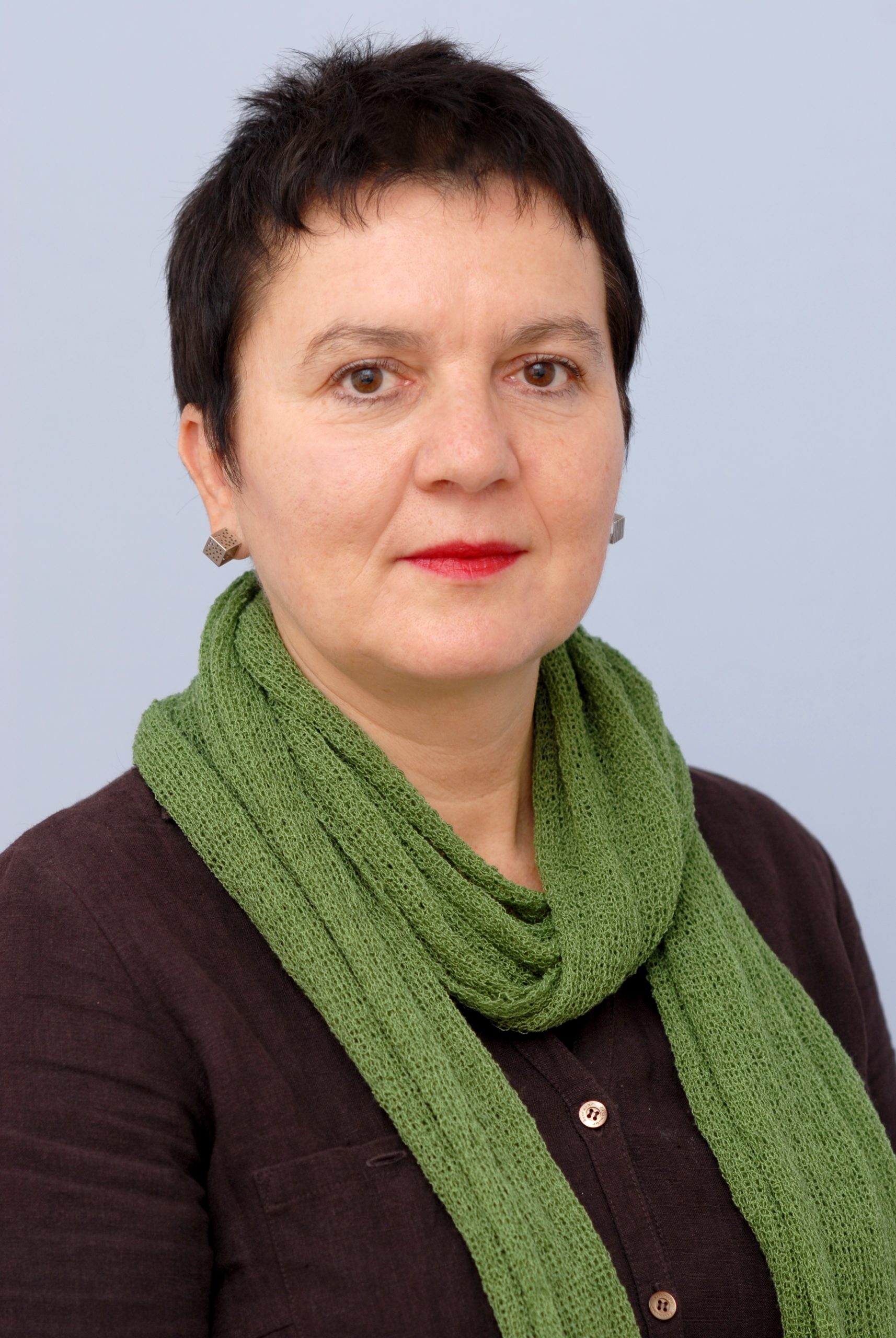 Dr Franziska Schreyer is senior researcher in the department "Education, Training and Employment over the life course" at the IAB.
Dr Franziska Schreyer is senior researcher in the department "Education, Training and Employment over the life course" at the IAB. 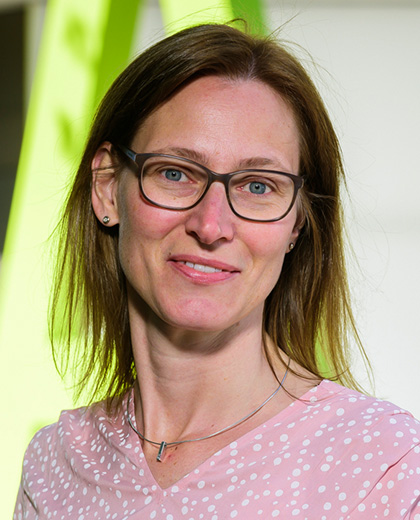 Professor Dr Silke Anger is head of the research department “Education, Training, and Employment Over the Life Course” at the IAB.
Professor Dr Silke Anger is head of the research department “Education, Training, and Employment Over the Life Course” at the IAB. Tim-Felix Grabert was an intern in the “Education, training, and Employment Over the Life Course" research department at the IAB.
Tim-Felix Grabert was an intern in the “Education, training, and Employment Over the Life Course" research department at the IAB.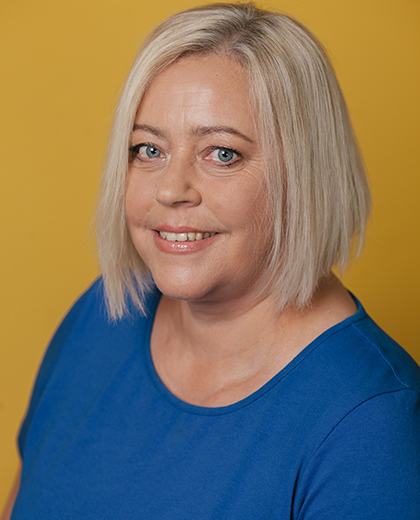 Olena Martyniuk is a professor at the International Economy Department at the Kyiv National Economic University, a research associate at the Otto Friedrich University in Bamberg and a visiting researcher at the “Education, Training, and Employment Over the Life Course” research department at the IAB.
Olena Martyniuk is a professor at the International Economy Department at the Kyiv National Economic University, a research associate at the Otto Friedrich University in Bamberg and a visiting researcher at the “Education, Training, and Employment Over the Life Course” research department at the IAB.